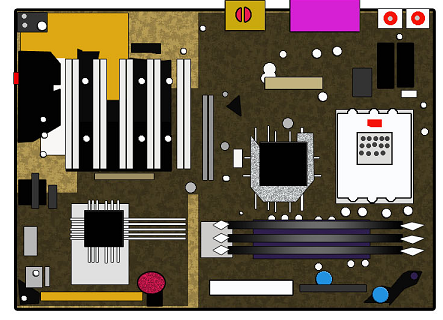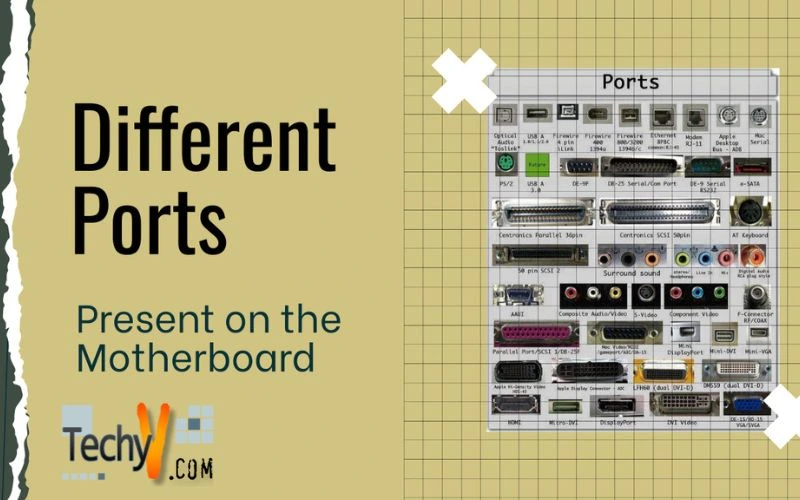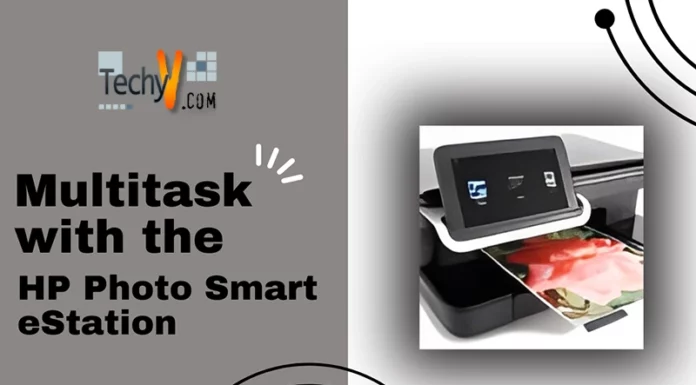Different Motherboard Ports
Motherboard is the central circuit board of a computer. It is also called main board or system board. It is, in general, the connecting part of different devices and hardware in a computer system. For the purpose of attachment, various ports mounted on motherboard.

IDE port: IDE fully Integrated Device Electronics is a way for connect typical storage devices to computer system such as hard disk drive, optical drive, tape drive etc. The IDE interface was first developed to support the increased performance of a hard disk at the time when the hard disk drive manufacturers decide to integrate the controller card within hard disk. Purpose was to tune the performance of card with drive and this tuning maximizes the performance of hard disk incredibly.
SATA port: SATA (Serial Advanced Technology Attachment) is a bus interface system designed to replace older IDE or ATA, first introduced in 2003. It is superior to Parallel ATA also. Its work is to connect storage and optical devices such as hard disk, DVD-Rom etc with host bus adapters. The ATA or IDE used 16 data conductors at a much lower speed. On the other hand SATA does the same work via two pairs of conductor at a comparatively very high speed. Protocol of connection is as per name serial. Capacity of load is from 1.5 Gbit/sec to 6 Gbit/sec.
ISA port: Industry standard Architecture was first invented in 1981 by IBM as a part of IBM PC project. It was in general computer bus standard for IBM computers. Now-a-days it is not generally used but it was the basis for the development of ATA as well as SATA.
PCI port: PCI (Peripheral Component Interconnect) is a computer bus, in general the replacement of ISA, used for attaching typical PCI devices such as sound card, modem, network card, disk controllers etc. PCI first created by Intel at July,1993. PCI is now a very common interface appears in many other types of computer. Design of bandwidth is either 32 bit or 64 bit. Style of connection is parallel. Capacity of load is 133 MB/s or 266 MB/s or 533 MB/s, varies under the variation of width & frequency.
PCI-Express port: Created by Intel, under joint research of four company; Intel, Dell, IBM, HP. It supersedes the conventional PCI. It is faster than PCI and used to attach PCI Express devices such as graphics card and other typical devices. Bandwidth is 1-32 bit. Style of connection is serial. Capacity varies from 250 MB/sec to 16 GB/sec, depends upon form factor.
PS/2 port: The PS/2 interfaces, first designed by IBM in 1987 and comes with IBM Personal System/2 series of computer. Generally use to attach mouse & keyboard in the computer system. Its evolution superseded the DIN & DE-9 connector. Though it is replaced by high speed USB, manufacturers still now provide PS/2 interface in their product. However the protocol of communication & interface for both mouse & keyboard are same, they are not interchangeable due to the difference between set of logical command of two devices.
Parallel port: Parallel port is a communication interface parallel in appearance. Two developers of Centronics, Robert Howard and Prentice Robinson first develop parallel interface in 1970 for their printer model no 101. Then it got an industry standard rapidly. First modification came out by IBM in their personal computer for their printer at 1981. After then in 1987 IBM implement earlier bidirectional interface. Parallel port was mainly used for printer connection, which is why it is also called printer port. Now this interface is successfully replaced by USB.
Serial port: In contrast of parallel port, serial port is a communication interface physically serial. Information transfer rate is 1 bit/s, which we cannot even think now. Serial port was used in terminal devices such as dial-up modem, UPS, printer, scanner, various LED & LCD text device, GPS receiver, serial mouse, microcontroller, satellite phones. It is superseded by high speed USB.
USB port: Universal serial bus first invented by an Indian Ajay Bhatt who was working for Intel Corporation at January 1996. But its development began earlier in 1994 by a group of seven well known companies related to electronics & telecommunication: Intel, IBM, DEC, Microsoft, NEC, Nortel & Compaq. First version had a data transfer rate of 12 mbit/sec. The second version USB 1.1 was brought in September 1998 and allowed for varying data transfer rate and thus become useful for multiple devices of different bandwidth. The third & frequently most used version is USB 2.0 released in April 2000. USB is the most common & most popular & mostly used interface now-a-days. USB interface is in general 4 wires connection, single for power supply, single for ground connection and rest two is for data transfer. Protocol of connection is serial & connector type is unique. Maximum power supply is 5V DC, 400 – 900mA. Almost all kind of device are successfully integrated to USB interface due to its ease of access, plug & play property. USB interface used in printer, scanner, mouse, keyboard, mass storage, optical devices, Smartphone, PDA even in power cord. Various type of interface such as serial & parallel port, game port, Apple desktop bus has been effectively replaced by USB.
Audio port: An audio port is a platform that enables to receive & send audio signals to & from computer under controlled logical operation. Earlier it was manufactured as a single hardware named Sound Card slotted by PCI port. But now built in sound card with motherboard reduce its demand. Although for high definition audio expansion card is better than built in one. Audio port is classified by speaker arrangement such as 2:1, 5:1, 7:1 etc. In general audio port features to convert a digital data into an analog data and typically done by a semiconductor also called audio chip.
LAN port: Also referred as network interface card is a network-capable device designed simply to permit computers to communicate over a computer based network. To access network with a LAN card user need an IP address which may either built into computer or as an external attachment.


















